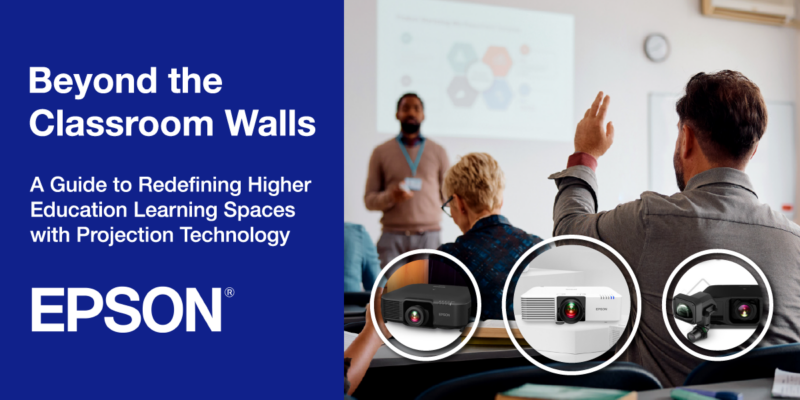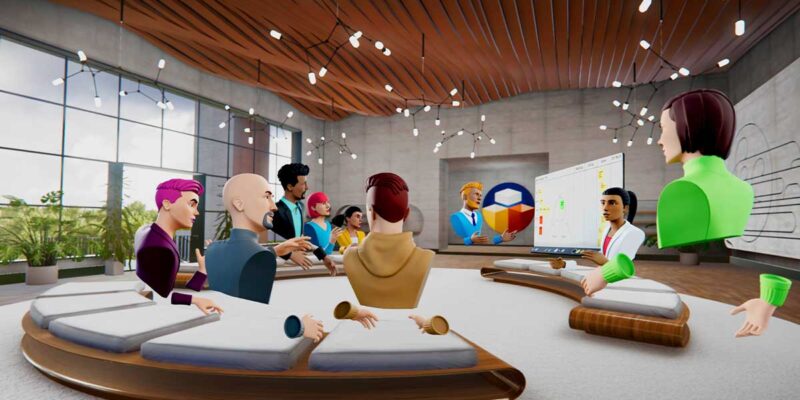How the Post COVID-19 Will Be a Boon for AV, DS and UCC

AVIXA has been publishing a monthly ProAV Business Index since mid-2016, gauging sales and employment indicators for the ProAV industry. The index is calculated from a monthly survey that tracks trends. Two diffusion indexes are created using the data, the AV Sales Index (AVI-S) and AV Employment Index (AVI-E).
This month’s AV Sales Index (AVI-S) is the first time the index has shown contraction rather than growth. As COVID-19 has forced billions of people into physical isolation, demand for anything outside of absolute necessities has ground almost to a halt. The result for ProAV is a massive slowdown in sales, with the AVI-S falling to 21.3. This score is 28.7 points below the neutral, no-growth level of 50. But, this isn’t isolated to ProAV, it’s any physical service industry. All of them. Worldwide.
This is NOT a time for panic. This is a time for logic, empathy and supportive, helpful hope. The common theme of every Star Wars film was “hope.” The 2008 campaign for the Obama presidential run was all about “hope.”
I teach at the University of North Carolina’s Hussman School of Journalism and Media, and have since 2009, and I’ve been in the AV industry for over 30 years now. My editor, and partner, has a journalism degree. Many of my team at rAVe [PUBS] graduated with a UNC journalism degree. Heck, our assistant editor graduated both from UNC’s journalism school as well as got her masters at the famed Columbia School of Journalism. And, we try, as best we can, to run rAVe [PUBS] with journalistic integrity with a separation between content and advertising. I say this in order to set up this statement: I am extremely disappointed in the vast majority of the mainstream press — but, specifically the so-called TV news. Sensationalism and panic are the words that come to mind. This is not empathetic or hopeful.
Logic: Of course the numbers reported by AVIXA are bleak. But, I am extremely impressed at how AVIXA is reporting this via both its weekly COVID-19 updates and the aforementioned AVI-S report. Let’s look at this logically: We can’t get into most physical spaces to install AV gear so, yep, things have ground to a halt. The logical progression has to be considered here — first, schools and corporations closed physical spaces; second, according to the New York Times (one of the few pubs not screaming fear and panic at its readers), approximately 80% of us are WFH (working from home) in the U.S. and EMEA. Next, installs were halted, since no one was there to facilitate them, and the 1,500 or so AV dealers in the U.S. and 900+ in the EMEA region were contacted and asked to freeze all systems in process of being specified, designed or that were actively in a needs-analysis phase. Then, the dealers contacted the manufacturers and distributors to put their work and shipments on hold. By this time, the shipping pipeline was already frozen either by self-selection (e.g., Amazon favoring shipping essentials over other products) or because of government intervention (air transportation was shut down or limited out of the countries where a lot of AV gear comes from — China, Japan and Korea). And the equipment made in Mexico, the U.S., Belgium, Germany and the UK all use parts from Japan, China and Korea. So, we enter what will almost certainly be defined as an economic recession (it only hasn’t because it hasn’t been long enough yet); the economy has ground to a halt. Oh, and all this happened in a mere 23 days.
More logic: All of us likely realize this is NOT a 2008-style recession we’re entering. In 2008, we had a systemic problem with the banking system. Here we have a logical progression of events with a beginning, middle and end — despite what the TV press is yelling at you, yes, there will be an end — and we should think logically about this.
No, we won’t go back to normal. There will be, what most are labeling, a “new normal.” But, that new normal isn’t bad. It’s just different. And, once that’s logical. I, for example, have never paid much attention to someone in a grocery store or on a subway standing next to me sneezing. Now, my auto-response is that my brain wonders, “Could this be coronavirus?” I hate it, but it’s true. But, at the same time, makes sense. For months, I’ve been telling everyone in my office about a guy who works in the same building as us, but in a different office, that rarely washes his hands after going to the bathroom. Now, he will. This is part of the new normal. And it’s a good thing.
I’ve read various reports that coronavirus lives on stainless steel for up to 72-hours but on plastic for less than 14 hours. If that proves to be true, we will see door handle manufacturers and elevator button makers shift production away from stainless steel to plastic — this is part of the new normal. So invest in plastic!
And, here the world is at home doing WFH and school WFH and Zoom exploded from 10 million video calls a day in December to 200 million per day in late March. Of course, what ensued next was an onslaught of the mainstream press beating them up for security holes. Zoom founder, Eric Yuan, answered this with a beautifully written blog that explained, with empathy, what happened and how, step-by-step they were addressing each one and have continued to post on the progress nearly daily, on that same blog site, the progress. The press moved on to something else, for the most part and many security analysts have turned to LinkedIn blogs to defend Zoom saying the press, mostly, didn’t even understand the actual security issues with Zoom and that, for the most part, you’d have to hack the person’s computer before hacking into their Zoom account and that if you had your computer hacked, Zoom would likely be low on the list of applications you use that they’d get data from. Logic.
I feel horrible for all my AV friends, from 30+ years in the industry, all in a state of disbelief, worldwide, at what is going on and how they feel helpless and they just want to work again, around other people and on real projects. I talk to some of them every day and they are trying to be patient but, even the best mindfulness experts can’t cope with the fear, loneliness and anxiety that this has brought on, simultaneously. I empathize as my kids, my friends, my work colleagues and I am feeling it, too. It. Is. Normal.
But, the new normal will be awesome for AV, digital signage and UCC. I promise you that. Our industry has been fairly immune to recessions in the past and, in this case with the new normal of collaboration being second-nature for everyone — even our parents now, too — and, look what’s happened with UCC — it’s MAINSTREAM! So, how will we benefit? Well, you will see me writing about this more in upcoming articles but, for starters, this WFH situation has brought to light how efficient and effective we can still be working from anywhere. Of course, security will be at the forefront, as well as true collaboration. Up until now, we’ve focused on using the built-in collaborative features that platforms like Zoom and Teams have that built-in, but it’s not enough. There’ll be a market for you to provide full document collaboration, archiving, transfer and retrieval as seamlessly for the person at a distance as it is for those in the room itself. Even small details like — think about this now — storage and transfer will provide the AV opportunity of a lifetime. In the old normal, we stopped at installing and making the UCC gear work. In the new normal, businesses and schools with thousands of students, will want secure and consistent ways of storage and transfer. Right now, some people at the client’s location may use DropBox while someone else uses Microsoft Box. Another may use Google Drive while their own marketing department uses iCloud. Where’s the logic in the security on all of this? While the IT department is and has been focused on the security of the stuff “inside” the company, we will be the bridge, via our video collaboration platforms we install and sell (and license), to make this consistent, secure and “shareable” for any meeting at any time. This is the new normal.
Let’s look at the new normal for digital signage. Touch has been big, big, big. The 20% growth we’ve enjoyed year-over-year for the past decade in signage has been driven by interactivity. Now, touchless interactivity will be the future. This means AI, voice and even gesture control will become the future of digital signage — thanks to COVID-19. Who does all that? AV does. No one, right now, does this better than LUMOPlay. No one. And, look at what NEC’s built with ALP — real-time engagement, analytics and proof of activity is perfect! Oh, and digital signage is about to become WFH-driven. We have a HUGE opportunity to drive digital signage content to the phones and laptops (and tablets) of all our clients’ employees. So, if they work from home, each day they’re greeted with a screen (alongside their login) that’s filled with HR, sales and marketing messaging that normally would have been driven from in-person meetings, watercooler discussions or emails. We will be expanding and scaling their current signage platforms to driven signage content within AND outside the walls of their businesses (and schools). Each student will be greeted with messaging from their respective department that supersedes the plethora of emails and texts they get driven from the cloud seamlessly like what both SpinetiX with ARYA and BrightSign with BSN are doing with their cloud-based signage systems, with messaging front-and-center that takes over their screens if you need to. Messaging perfection whether the client is working from home or at their office. Who does this? AV does this! This is the new normal.
As AVIXA has shown us over the past two years, AV is all about experiences. Those experiences aren’t relegated to in-person or on-premise. An experience is wherever you are. We drive experiences with AV. The new normal will count on us to emulate in-person experiences and make virtual ones as memorable as in-person ones. We’ve always had virtual experiences in AV but, we’ve focused on just making the on-premise or in-person experience have the wow-factor and told those joining from afar using video that, “you gotta come see it for yourself.” Making at-home experiences as good as in-person is simple — it requires AV. And lots of it. Many, many more cameras. Camera integration will explode over the next few years. Companies like PTZOptics will not be fringe outliers, but as mainstream as Logitech. You will be buying and integrating a lot of PTZ stuff — and all that comes with it — mics, lighting support and CONTROL. Managing the experience so that the “from afar” participant can control his or her own experience will be big-time. So, companies like Extron, Crestron and Kramer will sell even more and their user-interfaces will become cloud-based options to drive this seamlessly (and securely) from anywhere and from any device. The same control system that drives the Zoom Room and the business will include a cloud-option to drive and manage all the “from afar” gear (both ways), too. Who does this? AV does. This will be the new normal.
This is only the start. I will be writing a lot about this in the coming months. The vision I see is not only mine, by the way. The author of the 2019 best-selling business book The Invisible Brand, Bill Ammerman, shares this vision, and he’ll explain to you how voice, AI and touchless technology will drive the future during ProAV Day of LAVNCH WEEK on April 27. We designed LAVNCH WEEK #1 (the week of April 27 – May 1) to be a complete virtual event filled with both inspiring ways to leverage the new normal, post COVID-19, and leave you with tangible outcomes no matter who you are in AV, digital signage or collaboration. So, don’t just trust me, come listen to Bill, Dave Labuskes (who will talk #AVgood), CEO Eric Yuan from Zoom and Joe Way, director of USC learning environments (he talks From Doom to Zoom in 60 Days), as they will not only fill you with hope but help you leverage the empathy and logic to play in the new normal and turn Q3 and Q4 back into growth quarters!
Thanks for reading, stay safe and healthy and PLEASE be more than hopeful.





